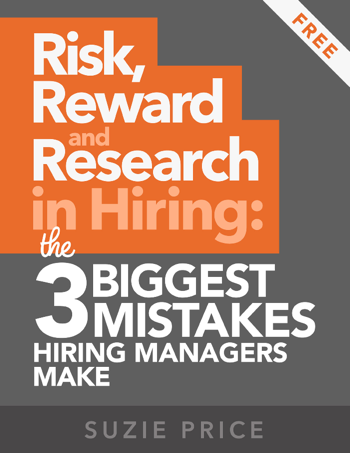The Know How You Need & the Tools to Get You There... Get Certified >

Workplace Motivators Management Tips
What is the Workplace Motivators Assessment? It measures why a person does what they do, what causes them to take action, and it drives behavior. All motivators add value. It does not measure ability, but interest. This is what "puts gas in their tank." If you want to understand motivation, you need to use the Workplace Motivators assessment.
This assessment measures a person's drive and the level of interest in six different motivator focus areas. Refer to the motivator that is ranked #1 and #2 (most interested in this area) and the motivators ranked #5 and #6 (least interested in this area). We focus on most AND least, because avoiding something we are least interested in becomes a motivation.
- Theoretical/Knowledge - Most Interested (#1 or #2), Least Interested (#5 or #6)
- Utilitarian/Economic - Most Interested (#1 or #2), Least Interested (#5 or #6)
- Aesthetic/Surroundings - Most Interested (#1 or #2), Least Interested (#5 or #6)
- Altruistic/Others - Most Interested (#1 or #2), Least Interested (#5 or #6)
- Individualistic/Political - Most Interested (#1 or #2), Least Interested (#5 or #6)
- Traditional/Regulatory - Most Interested (#1 or #2), Least Interested (#5 or #6)
The leaders who make the most of this information with their team members, are the leaders who've also taken the assessment and applied this information to themselves.
The THEORETICAL/KNOWLEDGE Motivator
The focus of the Theoretical motivator continuum is knowledge — specifically how a person values knowledge, learning, and discovery. This driver also does not indicate intelligence. People who rank this as their lowest interest aren’t less smart. Both ends of the spectrum value knowledge. They just value it in different ways.
If Theoretical is ranked #1 or #2, most interested:
- People with Theoretical as their top interests want to acquire knowledge, discover, and find opportunities to learn wherever they are.
- They want all available knowledge on the subject, simply to understand it, regardless of the direct application.
- They like learning for the sake of learning!
- In their work environment they want to pursue continuous learning opportunities.
- If they stagnate in their role, their productivity will plummet and they will become at high risk for experiencing burnout.
- When they get access to the right depth of information, they will continuously improve their procedures and abilities in their position

- Provide opportunities to attend conferences, workshops, and training to build their skills and open their minds up to different avenues of thinking and problem-solving.
- They thrive with new information, so training gives them a bonus and you a bonus by developing your internal talent pipeline.
- A last and practical suggestion is to make sure that people with Intellectual drivers have solid boundaries in place in their positions.
- They need room to move around and grow in their roles but they also need an established hard stopping point when it comes to researching and digging into new info.
- It is easy for these folks to get carried away in their work and that can be impractical and slow down progress, so make sure a balance is clearly established for their success and the overall success of your team.
If Theoretical is ranked #5 or #6, least interested:
- Use past experience, intuition, and real-time research to solve an immediate need.
- They want only the knowledge necessary to accomplish the task at hand.
- They pursue knowledge on a “need to know” basis.
- They have very specific needs in the workplace. One of the most important is access to well-organized resources, like Knowledge Bases or project briefs.
- Having the information they need on hand without having to guess at it will help them stay efficient and save time. This also allows them to solve problems on their own, rather than seeking out assistance from others, which lets them keep a brisk schedule.
- They usually prefer a fast pace. Being able to set their own standards and work according to them will be a huge boost in terms of their productivity.
- They want to get the information they need, execute the task, and move on to the next one as efficiently as possible.
- If they need to do research or to dig into the data make sure you have a reason to back up that work. Supporting their other top drivers will strengthen their effort overall.
Each interest, high or low, of the Theoretical motivator is important to understand for your team. Appreciate the people around you with these drivers and apply this knowledge to help them be successful.
The UTILITARIAN/ECONOMIC Motivator
The focus of the Utilitarian motivator is how a person values practicality, usefulness, and gaining a return on all investments of time, talent, and resources. Both high and low interest in the value of utility, are of value.
If Utilitarian is ranked #1 or #2, most interested:
- People with this as a top driver are driven by practical results, maximizing both efficiency and returns for their investments of time, talent, energy, and resources.
- They are passionate about returns on investment and want to build a framework that maximizes their time and talent invested in a project.
- To someone with this as a top driver, people are valued for their talents and can be seen as useful assets, rather than individuals.
- They need to see a return on the investment of time and resources to be happy in their work environment.
- If either are wasted on a regular basis, they’re going to become quickly frustrated and disengage with their work, simple as that.
- Make sure to demonstrate value to these folks! Take the time to prove the value of a project on not just the organizational level but on the individual level— if you don’t explain how it benefits them, then you’re not going to get the highest rate of engagement.

- Of course, it isn’t always possible to directly relate the value of every situation to each person, but by taking the time to explain why you’re asking them to complete a task, you will be demonstrating that you value their time and their talent. That will make a world of difference.
- Lastly, don’t be afraid to get creative! Since people with Utilitarian as a top driver hate waste of any kind, ask them to put their keen minds to good use to solve problems in your processes and organizations.
- More likely than not, they already have ideas about how to fix the things slowing your work down; ask for their input and you’ll likely be surprised and thrilled at the results.
If Utilitarian is ranked #5 or #6, least interested:
- These people are driven by completing tasks for the sake of completion, with little expectation of personal return.
- They contribute to a project with minimal expectation of personal return and are focused on accomplishing tasks for the sake of accomplishment.
- They tend to focus on the greater good versus a return on the investment of their resources
- An important thing to remember is the focus is with respect to utility or “tasks” for this science. It is easy to revert to the everyday use of selfless, which typically refers to interactions with people, not tasks. It is important to note this context to best understand this focus.
- They have specific workplace needs and stressors. They are focused on viewing people for who they are, not for what they do, and they want their work to contribute to the greater good.
- To get them fully engaged and invested in a project, explain how the desired outcome will support others in the workplace.
- Focus on the completion of tasks as well, not just stressing economics or ROI.
- These people thrive when they’re able to create processes with unlimited resources, time, or access to people.
- While that’s obviously not possible for most projects, building in time for them to get settled and focus on the process, not just the outcome will result in optimal results.
- Keep an eye on your team members who focus in this way, and make sure that they’re not overextending their abilities.
- If they’re involved in a project they’re extremely passionate about, they will be more likely to waste resources, ignore time and talent constraints, and put their all into it despite possible personal circumstances, like financial commitments or stress levels.
Each interest, high or low, of the Utilitarian motivator is important to understand for your team. Appreciate the people around you with these drivers and apply this knowledge to help them be successful.
The AESTHETIC/SURROUNDINGS Motivator
The focus of the Aesthetic motivator is their surroundings, precisely how the beauty and form in their surroundings impact and influence their experience.
If Aesthetic is ranked #1 or #2, most interested:
- This has a subjective focus on the experience and the totality of their surroundings – often preferring form over function and seeking to beautify and harmonize the world around them.
- They feel a high level of satisfaction when they can create harmony and tranquility in all aspects of their life.
- Beyond beauty, this driver looks at the big picture.
- This person may like to complete projects in order to see the full picture seamlessly evolving over time.
- The first thing they need in the workplace is an acknowledgment of their moods and experience in their surroundings.
- Find this out by asking them how they feel about their work environment. What stimulates them? What distracts them? What can be improved or changed immediately, and what needs to be changed over time?
- They already have a strong sense of aesthetics and will know what they need to have better experiences.

- They are looking for balance in all areas— help them find it!
- They need time to think, daydream, and work through problems at their own pace.
- Make sure they have a balanced workload.
- Another important thing: ensure that these team members have opportunities to continue to develop themselves.
- They are driven by creative self-expression and opportunities to experience new things, so make sure they have a creative outlet, no matter their role.
If Aesthetic is ranked #5 or #6, least interested:
- People with a lower interest driver are driven by the functionality and objectivity of their surroundings.
- They are not distracted in environments filled with chaos and have the ability to view everything in pieces and focus on one piece at a time.
- They tend to be Objective and are constantly looking for objectivity in their environments and focus on function over form.
- They prefer to break a whole project or idea down into measurable parts and look at them independently of one another.
- These people need a functional work environment over everything else.
- When communicating with them, make sure to get to the point!
- Using bullet points without overloading a conversation with extraneous information will help them hone in on what needs to get done; in the same mindset, try to remove emotions and feelings from discussions as much as possible.
- These people tend to be excellent project managers.
- They don’t lose their cool in the chaos of a large-scale objective and can break projects down into a more manageable scale.
- Let them harness their ability to focus on specific, measurable outcomes and watch your entire team thrive because of that.
- One thing to keep in mind; these folks people get overwhelmed or extend too far past their abilities, they might end up creating chaos rather than solving it since their tolerance for it is much higher than others.
- Help keep these team members on track with project briefs, clear to-dos, and outlined goals for them to hit.
Whether an employee has a high interest or low interest in this motivator, they both offer crucial insight into your workplace. Their different perspectives and talents will make your team all the stronger when it comes to taking action and making aesthetic decisions.
The ALTRUISTIC/SOCIAL/OTHER Motivator
The focus of the Social/Altruistic motivator is others – more specifically how a person values giving, being of service, and helping others. It’s important to remember that both ends of the continuum value helping others; it just shows up in very different ways depending how a person ranked their interest.
If Altruistic is ranked #1 or #2, most interested:
- When Altruistic is a top interest for people they are driven to assist others for the satisfaction of being helpful or supportive.
- They hold the firm belief that all people should have the opportunity to be the best they can be, and will give generously of their time, talent, and resources with no expectation of personal return.
- People with this as a top interest have a keen sense of noticing and responding to what others need.
- They will also sacrifice their personal gain in a situation if the outcome is detrimental to others, and are prone to giving in relationships by focusing only on the benefits of their actions to others.
- They prefer to avoid conflict and inconsiderate actions towards others and will go the extra mile to make sure all parties leave a situation as happy as possible.
- Those with this as their top interest will be most successful in a workplace environment that reflects their values.
- Making your workplace socially responsible will engage these employees!
- Supporting community and public service events will give your Altruistically driven team members a motivational boost.

- Ask them for ideas and causes close to their hearts, and help them brainstorm how to get your company involved!
- People with an Altruistic driver need firm boundaries in the workplace. They will go above and beyond to help others at a cost to their own well-being, so make sure that your team has a strong work/life balance.
- If you hint or imply that these boundaries are optional, your Altruistic team members will read between the lines and likely suffer from burnout, so make sure your leaders’ are protecting the resources and capacity of their teams.
- Allocate time and resources for these people to help others in their day-to-day.
- If you’re putting too much emphasis on bottom-line results and not giving them time to grow relationships with others and assist in different areas, they’re going to disengage.
- Set aside capacity for these team members and give them a chance to assist others without sacrificing productivity.
If Social/Altruistic is ranked #5 or #6, least interested:
- People with this area as a lower interest align with traditional workplace goals and results-driven metrics.
- They need to have set KPIs that are measured individually.
- They want to be measured and recognized on the metrics of their work, and while that isn’t always possible, embrace it whenever you can to help them engage.
- It’s important to remember that these people do care about others, just in their own way and on their own terms.
- They can be fiercely loyal and protective of their team, or anyone they determine to be in ‘their circle’.
- This is great for those team members but can mean that they come across as cold or insensitive to the plights of others outside of that circle.
- Make sure to have these team members collaborate across departments when possible, and encourage them to find a mentor or to mentor others to broaden their perspective.
- These people who are driven to assist others for a specific purpose, not just for the sake of being helpful or supportive.
- You know the saying, “Give a man a fish and you feed him for a day; teach a man to fish and you feed him for a lifetime”? That’s what this person is all about.
- They see the world and the people in it as part of a toolset to accomplish their own goals, and as a result, they are selective about who, when, why, and how much they are willing to give to others.
- This doesn’t mean that they don’t care about others! It simply means that they are careful with their energy and resources and want to see a return on their investments.
- One of the most important things for people who score this way, is accountability across the board in an organization.
- They want a good reason to put one hundred percent and won’t respond well if others aren’t doing the same.
- Make sure that everyone within your organization is measured by equal metrics, and work to ensure that your executive team is transparent about goals, standards, and their own performance as well as performance within the organization. These team members will notice.
Whether an employee has a high interest or low interest in this motivator, they both offer crucial insight into your workplace. Their different perspectives and talents will make your team all the stronger when it comes to being of service and helping others.
The INDIVIDUALISTIC/POLITICAL Motivator
The focus of the Individualistic motivator is power — specifically how a person values individuality, status, renown, and personal influence. It can be complicated to try to understand a concept as abstract as power, so let’s break it down and dig into both sides of this spectrum.
If Individualistic/Political is ranked #1 or #2, most interested:
- These people value status and public recognition and they assert control over their freedom and destiny.
- They are driven to create winning strategies and are passionate about creating an enduring legacy through their work.
- If someone ranked this as a top interest, doesn’t necessarily mean they are aggressive or direct in the workplace. It simply means that they want a hand in creating their own path forward and prefer to take on roles that receive recognition.
- People with this driver often end up as the “go-to” person for those around them, regardless of the problem at hand.
- They like operating with a plan and aren’t afraid to take charge if a situation needs a leader.
- These people need public recognition for their work.

If Individualistic/Political is ranked #5 or #6, least interested:
- These people are driven by being in a supporting role and contributing with little need for individual recognition.
- They focus on their contribution versus advancing their position and enjoy working behind the scenes and getting things done.
- If you’re looking for a team player, look no further!
- They thrive when working closely with others and love contributing to a mutual goal, tending to set aside their own agenda for the good of the company or community they serve.
- They need to look out for their own ability to ‘go with the flow’. This is helpful sometimes but can also be detrimental if the current direction of a project or initiative needs to change.
- They can lack the initiative to share ideas that contradict the current direction or path and, in extreme situations, can follow a leader or cause even to their own detriment.
- One of the things that will undoubtedly lead to stress is setting an expectation for public recognition.
- They are not motivated by receiving praise in front of others; they prefer to thrive behind the scenes.
- If their leaders are not careful, this preference can mean that they get overlooked for their achievements.
- Avoid this by demonstrating your support for them personally.
- Praise them in private, create channels for collaborative forms of feedback like a dedicated channel on your chat service for recognition, and make sure their accomplishments are recognized in ways that make them feel accomplished. If you’re not sure what those are, just ask!
- They also do their best work in group environments.
- Make sure to provide opportunities for discussions and brainstorming; this will help these team members open up and put themselves out there in a way that feels comfortable and productive to them.
Understanding these drivers will help you interact more positively with your team. Strengthen your team’s understanding of Power and look at both ends of the spectrum to improve engagement in your team.
The TRADITIONAL/REGULATORY Motivator
The focus of the Traditional motivator methodologies, which refers to how individuals locate meaningful and defined systems that align with their personal beliefs and values. It addresses how individuals view structures and traditions, and what kind of approaches they prefer to take.
If Traditional/Regulatory is ranked #1 or #2, most interested:
- People who rank this as a #1 or #2 interest are driven by traditional approaches and proven methods.
- They abide by a defined system of living.
- They prefer to show their work and want you to do the same; don’t ask them to do something without explaining the structure and your reasoning behind it!
- People with this driver seek consistency and place a high value on working within a defined system.
- If you don’t have an established system in place to safeguard processes and people, these individuals are going to have a problem.
- These employees people will help you look for a solution to that problem. They thrive when contributing to building a defined system and approach, so make sure you utilize their ability to do so.

- They work best in an environment that provides established methods and processes; it’s even better if those processes have been proven over time.
- Being able to ‘plug and play’ into a process provides them with the confidence and stability they need to fully engage in their work.
- They also thrive in workplaces with established and lived values.
- They want to know what they’re working for and who they’re working with, so they can determine if those organizational values line up with their own.
- They will thrive in an environment that explains changes. Explain the reasoning behind the new approach and demonstrate how valuable it will be across your entire team; people with a this driver can become your biggest advocates!
If Traditional/Regulatory is ranked #5 or #6; least interested:
- If this area is ranked as #5 or #6, they are driven by new ideas, methods, and opportunities that fall outside a defined system of living.
- These people are always looking for new ways to accomplish routine tasks and like to set their own path to guide and direct their actions.
- They tend to get creative when interpreting systems and will adopt aspects of them if they see a benefit.
- If you tell this person, “This is the way we’ve always done it!” without solid reasoning to back up that decision, get ready for pushback.
- These people like out-of-the-box thinking, gathering new ideas, and exploring possibilities.
- Give them problems to solve!
- Put them in charge of designing and implementing a new system when an old one isn’t working and you’ll be thrilled to see their curious minds at work.
- Make sure that these team members have access to continuous education in their roles.
- They’ll never be satisfied with setting down into a pattern— they want to make sure a process is the best it can be.
- Give them opportunities to improve their own understanding and keep up within your industries and reap the benefits.
- These people need to work on a team that will let them explore.
- Encourage collaborative conversations where your team discusses the ‘why’ behind the ‘how’ and never shut down exploration of possibilities.
- They may ask a lot of question , so make sure that your team is able to ask away and get the answers they need to engage.
Diving into the Traditional motivator continuum is crucial for your understanding. No matter where you and your team fall on that continuum, understanding the value of both sides is crucial for overall success.
LET'S TALK:
Contact us to schedule a Complimentary Consulting Call
or to ask questions about any of our Hiring,
Coaching, Training and Assessment services.




